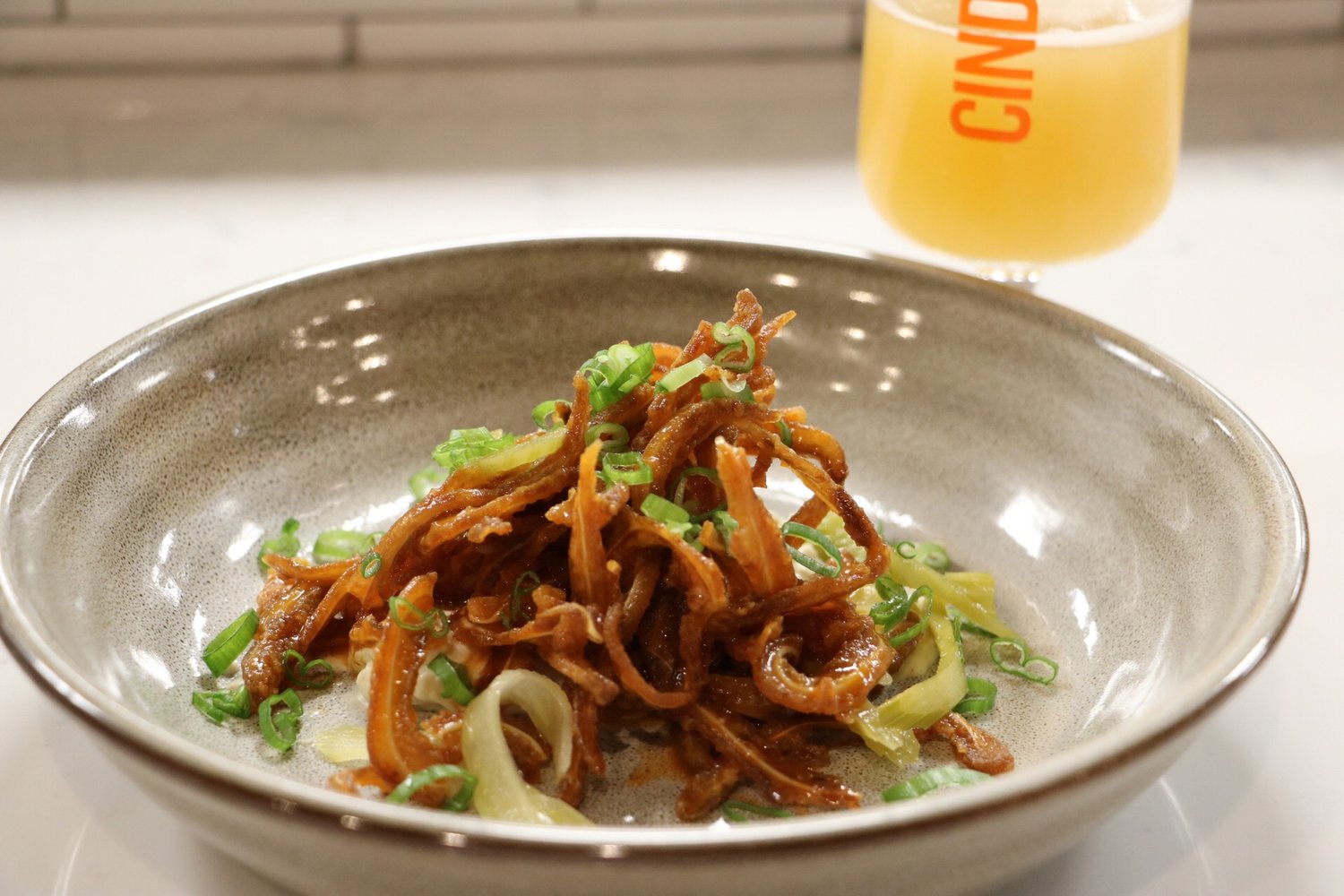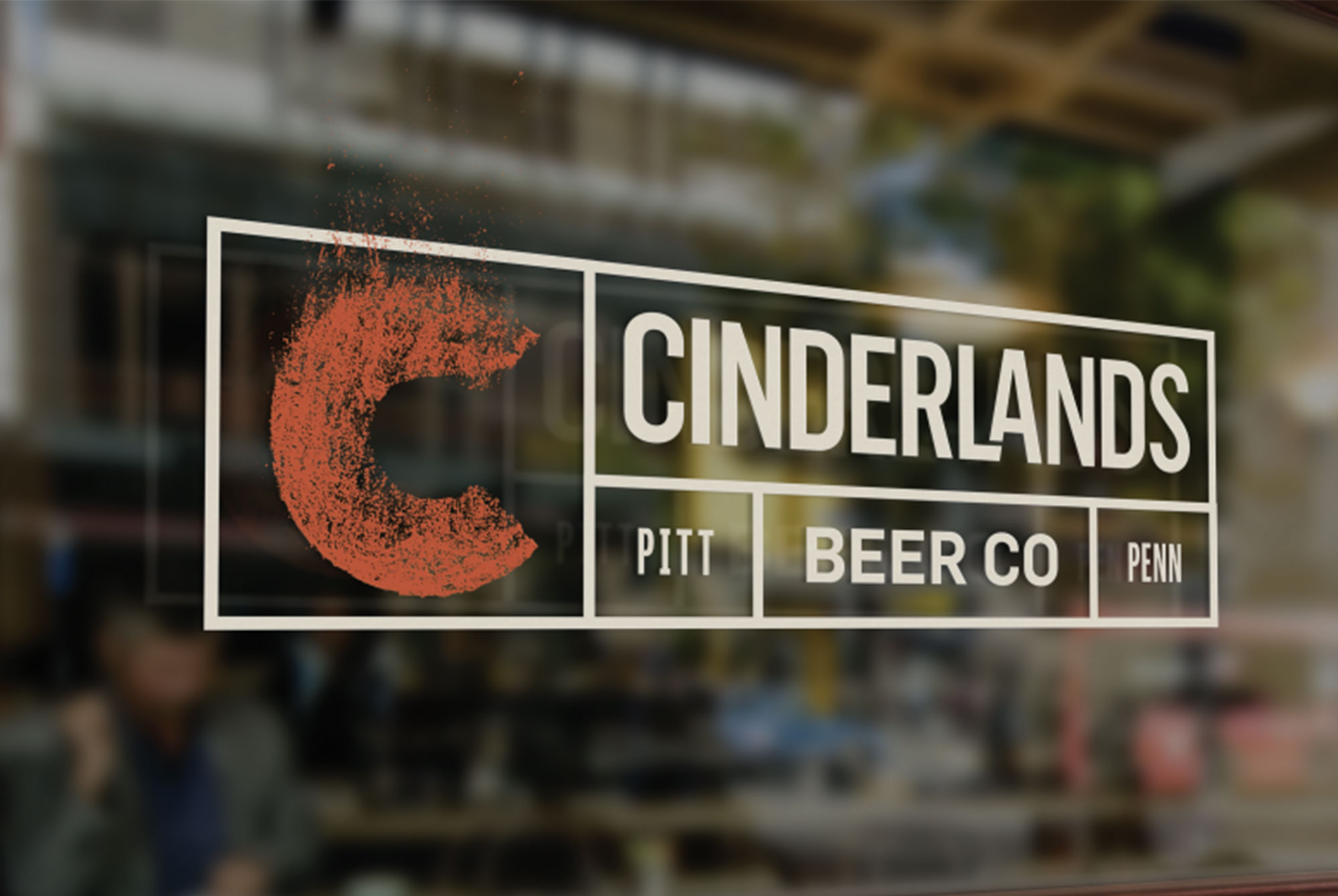Shop
How to Pair Beer and Food, According to Cinderlands Beer Co.
Have your cake (stout) and eat it too!
At the time of publication, there is one ticket available for the Origin Malt x Hop Culture Beer Dinner at Cinderlands Warehouse. Get your ticket and more info here.
When you think of pairing alcoholic beverages with food, it’s likely wine that first comes to mind. Sure, we’ve all taken a casual stab at choosing our beers according to what sits on the neighboring plates, but was it really with the same degree of intention? I don’t know about you, but beyond such low-hanging fruits as IPA’s with spicy dishes and stouts with stodgy (sorry) English foods, I haven’t. Were you to apply such haphazard approaches to wine, any self-respecting sommelier would take it as a personal affront.
As craft beer continues to push the gastronomic envelope and make itself mainstream, your pairing decisions will inevitably come under more scrutiny. In anticipation of our Origin Malt beer dinner with Cinderlands Beer Company at Juicy Brews Valentine’s Day, we asked Paul Schneider, Head of Brewing Operations, and Joe Kiefer, Executive Chef, for their take on making smarter choices when it comes to pairing beer with food. Whether you’re a seasoned brew foodie or you’re just beginning to get your feet wet, peep what Cinderlands had to say.
The Beginner’s Guide to Beer Pairing
For those who have yet to make their first foray into the world of pairing beer with food, have no fear. We asked Cinderlands for a primer on what to do when your pairing resume leaves a little to be desired. If there’s one key takeaway, it’s that choosing what beer to drink is a highly individual (and educational) experience–especially if you’re new to things. Start with something familiar and have at it, building your wheelhouse around personal experiences.
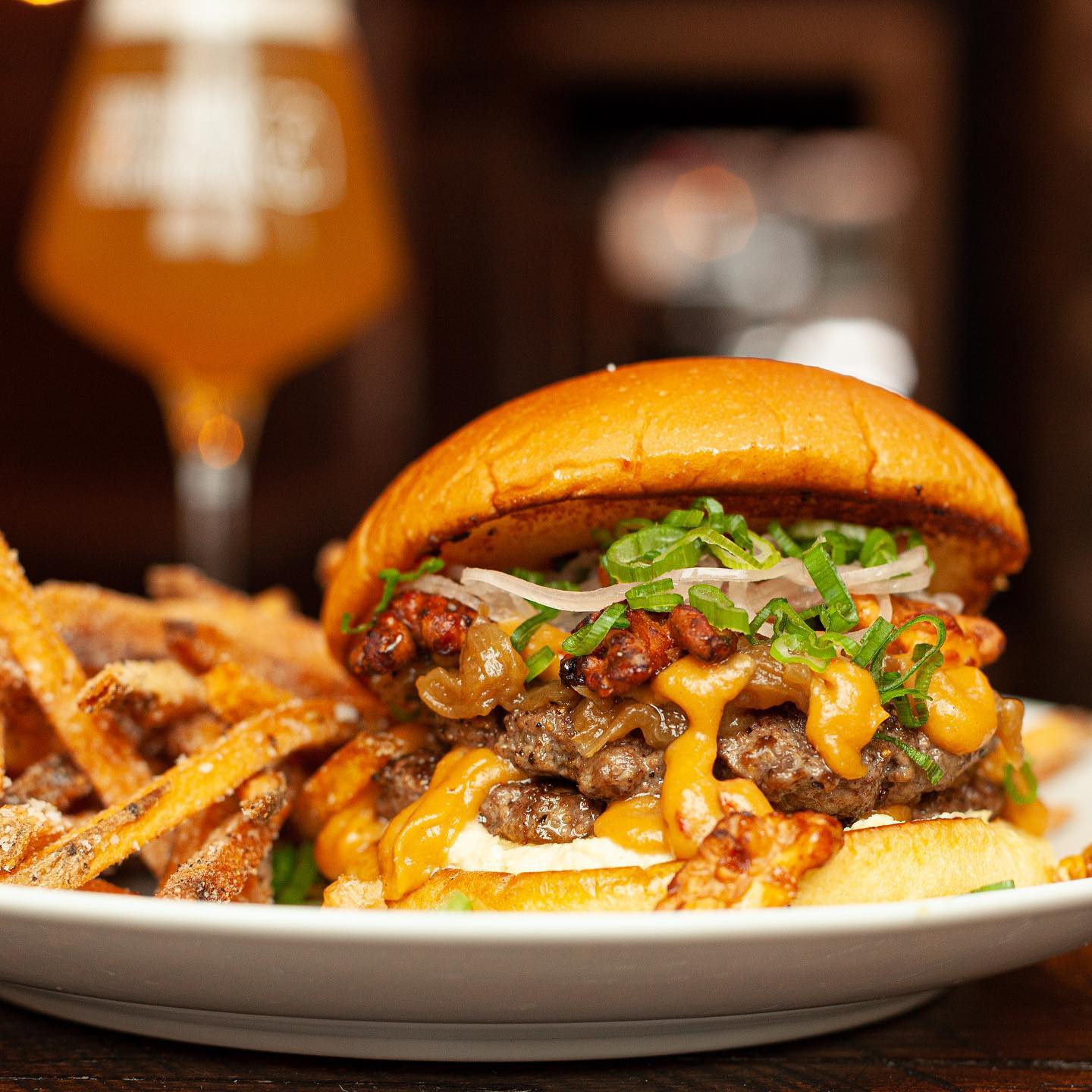
Gray Van Dyke: How should the uninitiated approach beer pairing?
Paul Schneider: The best way to start is just by drinking beer with food and intentionally considering your sensory experience. Don’t think too much about what to pair with what. Just do the drinking-and eating-together piece of it and start to think about the interactions of aroma, flavor, and mouthfeel. Try to put words to what you’re experiencing. What beer flavors amplify what food flavors? When do pleasant mouthfeel sensations happen? What beer sensations cut what food sensations? If you’re having trouble putting words behind what’s happening on your palate, reading the chapters in Randy Mosher’s Tasting Beer about sensory perception and food and beer would be a great place to start. The other great way to learn a flavor vocabulary is to start seriously cooking at home. Learn how modulating salt, acid, fat, spice, sugar, and texture transform the experience of eating.
Joe Kiefer: Start with summer BBQ. Maybe I’m being a little biased, since this is my favorite time of the year to drink. If you think about it, though, there’s not another time of year when you have so many bright, fresh, and bold flavors. You have almost as many styles of bbq as you do beers. Carolina-style fatty, smoked pork shoulder is usually served with a heavily acidic, slightly sweet mustard bbq and matches well with saisons. Texas-style brisket is so simple; the point is to allow the meat flavor to shine through and it pairs beautifully with IPAs or double IPAs because they can hold up to the bold flavor of the beef. Then, you have the vegetables. A cold tomato salad with fresh basil would go great with a slightly funky, not too acidic grisette. Mexican street corn is perfect with a cold pale lager. At the end of the day you, just need to drink as many styles as you can and just think about what you would want to eat with said beer.
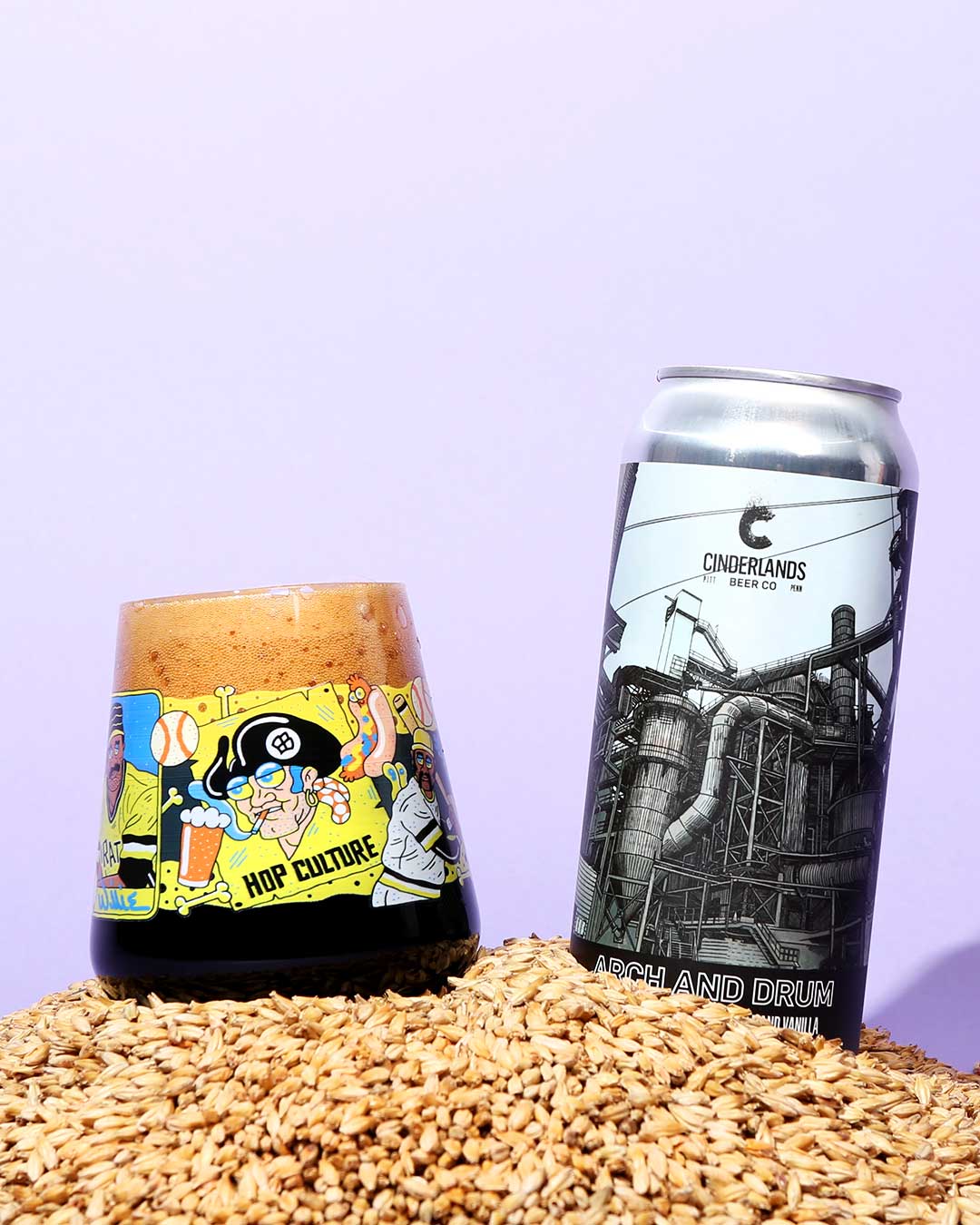
GV: Do you suggest starting with a beer and picking food or visa versa?
JK: There are a lot of factors that go into this. What do you have more knowledge of–food or beer? If you know more about food than beer, start with the beer first. Go to a local bottle shop and buy a variety of beers, take them back to the house and grab a piece of paper and a Sharpie. As you’re tasting each beer, write down what you’d think would go well with that beer. Start building a memory bank. If you take a little bit of time and tap into that knowledge bank it just kinda clicks.
The issue I was having when Paul and I first started doing pairings was not all the beer would be ready when I was writing the menu. Paul would try and describe to me the flavor profiles that we should expect from the beer but, when I would try it unfinished, I thought he was out of his mind. Fast forward two years and I finally can taste an unfinished beer and have a pretty good idea how it’s going to be after it’s mature and carbonated. I still find it easier to write a four or five-course menu and then taste what we have on draft and pair it based on that. After all that, I guess I usually start with food first because at the end of the day there are more variables in the food than in the beer. Working with beer that’s already finished, you know what you are getting with that.
Pairing Rules of Thumb
Even if you’re a fast learner or you find that pairing is old hat, it never hurts to have some guiding principles should you find yourself in danger of being lead astray. Having built your flavor vocabulary accordingly, Paul Schneider has a couple ground rules to ensure your pairing experience’s success.
GV: Do you have any rules of thumb to go by?
PS: Four rules of thumb will get you where you need to be:
- Match intensity. Pick a dish and a beer that are at similar overall degrees of intensity so that one doesn’t overpower the other. Intensity comes from a lot of different places. For beer: alcohol warming, bitterness, sweetness, body, creaminess, carbonation, acidity, hop flavor and aroma, fermentation flavor and aroma, caramel, biscuit, nutty or roast malt flavor, etc. For food: fatty richness, sweet richness, capsaicin heat, sauce or spice flavor, acidity, texture, char, smoke, etc.
- Find harmonies and contrasts. There are great complementary flavors like caramel malt flavor in beer and the caramelization in food that comes from sauteéing or roasting. Likewise, there are some incredible cuts or contrasts, too. The best example is using the acid in a sour beer style to cut the fatty or sweet richness of a dish.
- Use classic examples of regional cuisine and beers. Garrett Oliver’s The Brewmaster’s Table is the authority here. Drink Munich dunkel with schweinshaxe, witbier with mussels, and special bitter with fish and chips.
- Don’t force a strong-willed beer to make friends. A lot of the popular styles du jour like hazy IPA, heavily fruited sour ale, and pastry stout have enough going on. Save these to drink a la carte and find more food-friendly beers among classic styles.
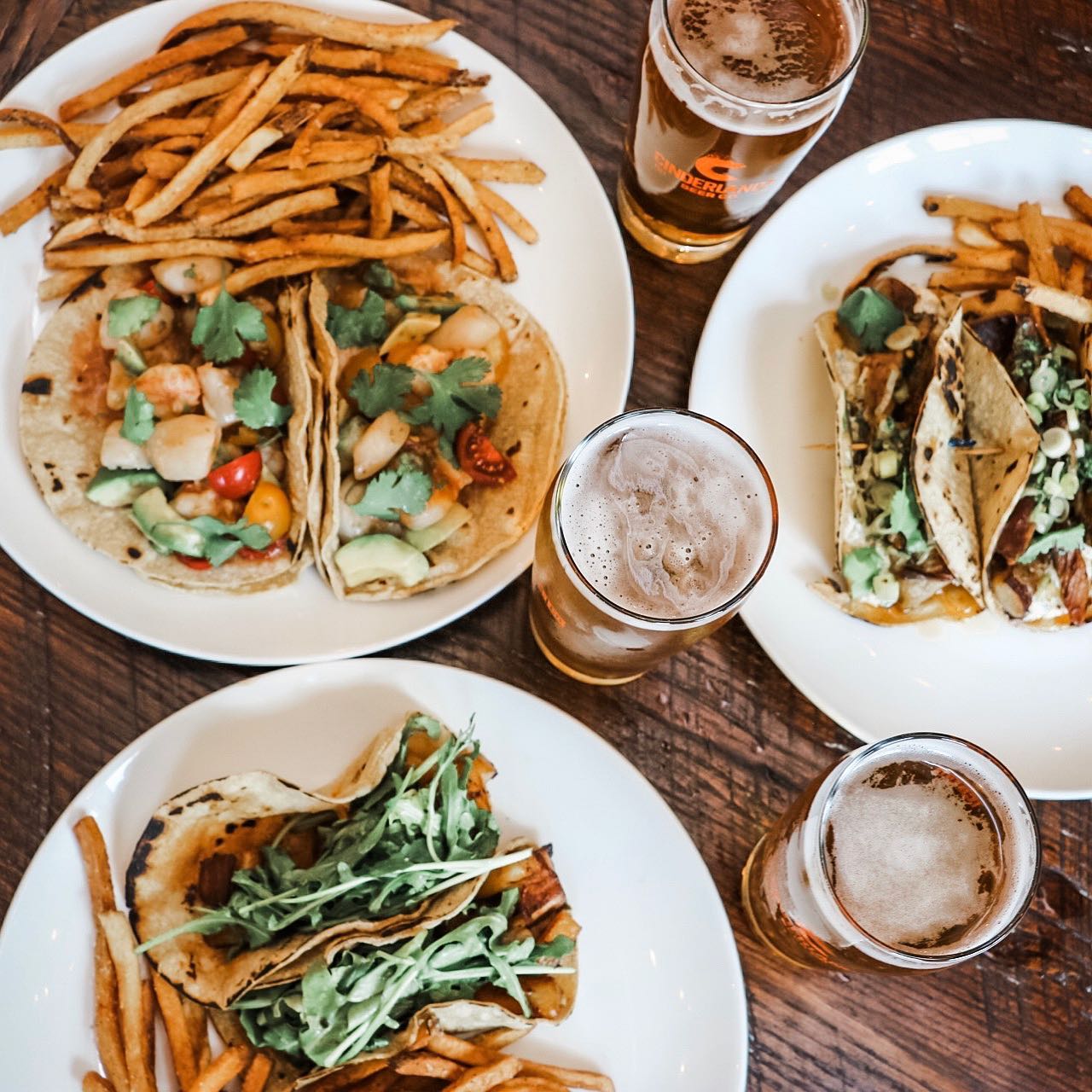
In-House Favorites
If those rules weren’t enough, we asked the pair for some of Cinderlands Beer Co.’s favorite beers to pair with food. Endorsed by a couple of pros, any of these options are bound to see you right. As a bonus, notice the flavor vocab peppering their recommendations.
GV: What are some personal standbys?
PS: Allagash White and chili is an unexpectedly sympathetic pairing. The coriander, grains of paradise, and peppery fermentation character complement the chili spices, and the spritzy carbonation and fluffy wheat body tone down the richness and spice. For the full effect, add a half-pint of dark, not-bitter beer like Great Lakes Edmund Fitzgerald to your chili for additional depth for the White to play off of.
I also love a classic bottle-conditioned saison as a versatile food beer. Saison Dupont, Blaugies Saison d’Epeautre, and De Glazen Toren Saison d’Erpe Mere are great examples of the style. Their dryness, firm bitterness, expressive fermentation character, and exceptionally high fermentation make them perfectly suited to a wide range of low-medium to high-intensity dishes from chana masala to grilled chicken to cacio e pepe.
JK: What I like to eat versus what I like to make for others are very far apart on the spectrum. Give me an I.C. Light and a cheap burger with yellow mustard and American cheese and I’m probably the happiest person at that moment. If I have my choice to design a beer dinner menu I’d love nothing besides wild-fermented saison and grisette. They pair with almost anything and you can add very little to get a whole new flavor to work with.
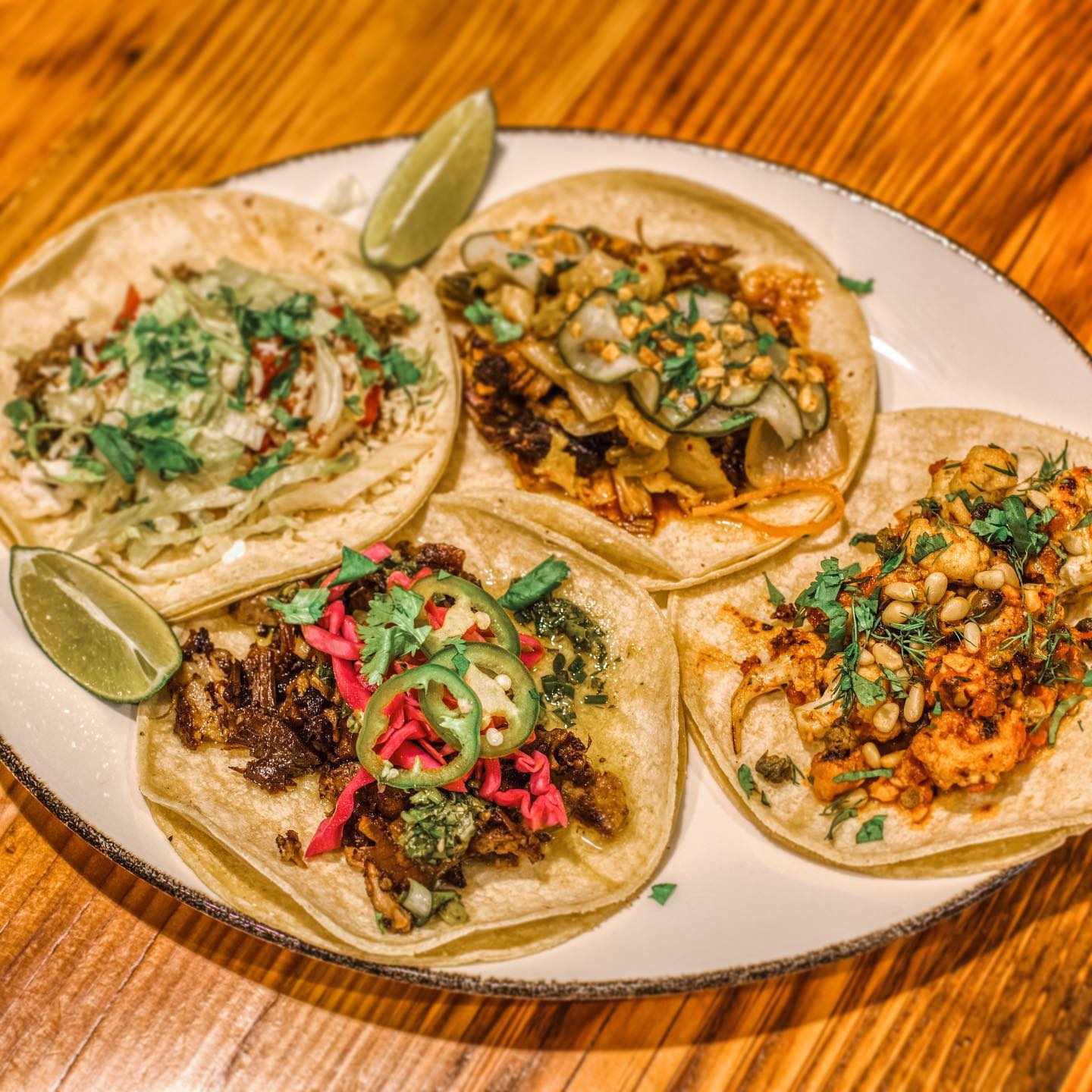
Why Wine?
It had to be asked. In the eyes of most, wine has long been the choice when it comes to pairing beverages with food. The guys at Cinderlands laugh at this notion and say hold my beer. See below for their thoughts on why we should be more beer forward with our pairing choices.
GV: Why do you think wine pairing generally receives more attention?
PS: Wine pairing may be more popularized, but not in the circles that most people run in. It’s inherently less accessible because of the relative cost of wine and beer, and the unfortunate and incorrect but pervasive belief that you need an expert like a chef or [sommelier] to make a successful pairing. Some adventurousness across iterated experiences can lead to anyone being able to successfully match a pairing. Beer is actually a much more versatile beverage for pairing because it spans more vast flavor terrain and has carbonation by default, but it’s also a more casual beverage that people tend to think less about while they enjoy it. I don’t know that I’d encourage changing that!
JK: This is pretty much straight out of Medium Raw or at least my interpretation of what Anthony was saying. At one point in a not-so-distant past there was an elite group of businesspeople who could and would go out and spend a small fortune on taking potential clients out on the town, dropping hundreds of dollars on a bottle or two of whatever fancy wine made with these grapes that had a stellar year in 1914 in this very specific region of France and a sommelier would tell you why you can’t pass this up. Of course, it was all a tax write off for the company. Just spend as much as you could; why not? It was free money. Restaurateurs would rather have those insanely high check averages so that’s what they focused on. You could never bring that type of money in with beer. Fast forward to the mid-2000s and people can’t spend that type of money, and that matches the time when beer and food pairing became more popular. You can have the same experience, if not a better one, with beer. It’s so versatile and I personally believe there is more room to bring food into beer pairings than wine.
What’s Next?
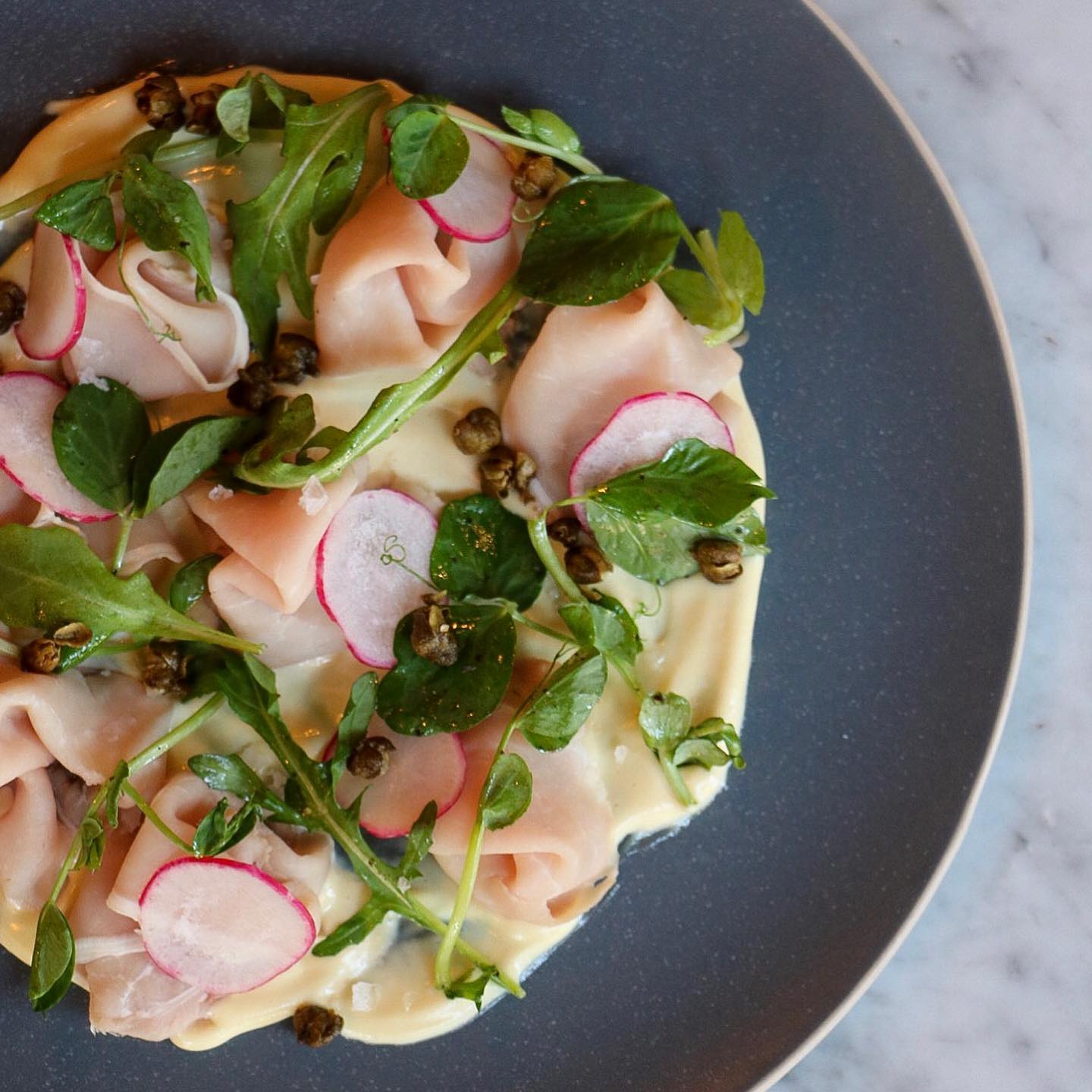
GV: What does it mean for beer? Where would you like to see beer pairing in the future?
JK: You should only take it as seriously as your clientele will let you. If you can get people excited about a $300 seat for a 6-course dinner and grab some incredible beers and top quality ingredients, good for you–and you should because that can be a once-in-a-lifetime dinner. If all you can get people out of their box for is $40 for 3 courses, there is no reason you still shouldn’t try your hardest to do the best pairing with what you have. (It doesn’t have to be fancy or expensive or complex to be great.)
Liked this article? Sign up for our newsletter to get the best craft beer writing on the web delivered straight to your inbox.

